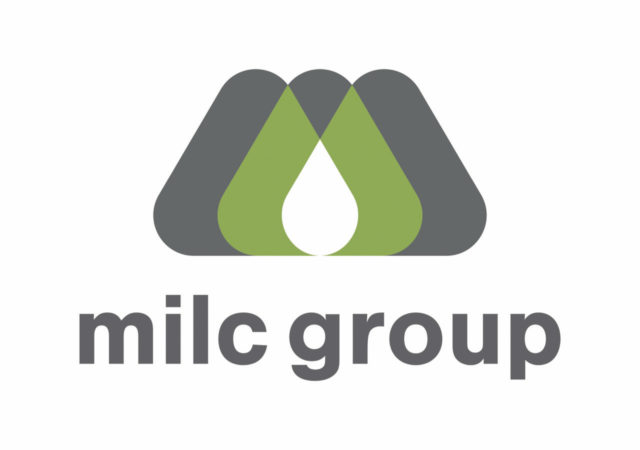The percentage of dairy operations using computers hasn’t changed much in recent years, but dairy farmers continue to move toward higher-speed internet connections when and where it is available, according to a biennial USDA report.
“Farm Computer Usage and Ownership,” released Aug. 21, summarizes responses collected in USDA’s annual June survey. Questions related to computer access and use are added to the survey in in odd-numbered years. The 2017 computer usage estimates are based on responses from more than 24,000 agricultural operations and represent all sizes and types of farms.
Computer use: not much change
The 2017 survey found overall farm computer access, ownership, internet access and computer use for farm business has changed little from similar surveys in 2013 and 2015.
About 73 percent percent of farms have access to a computer in 2017, unchanged from 2015. The proportion of U.S. farms owning or leasing a computer in 2017, at 72 percent, was up 1 percent from 2015.
About 71 percent of U.S. farms now have internet access, compared with 70 percent in 2015.
Farms using computers for their farm business was 47 percent in 2017, compared to 43 percent in 2015. A new survey question in 2017 related to smartphones and tablets found 39 percent use either or both for farm business.
Dairy details
About 66 percent of U.S. dairy operations have computer access, 64 percent own or lease a computer, 48 percent use computers for farm business, and 63 percent have internet access. Additionally, about 35 percent use a smartphone and/or tablet for farm business. Dairy farms with $250,000 or more in annual gross income have access and use computers more than their smaller counterparts.
Internet access: a need for speed
About 3 percent of U.S. dairy farms with internet access still do so via dial-up connection, according to the report.
Digital Subscriber Line (DSL) connection continues to be the most common method of accessing the internet among dairy farms, at 30 percent, down from 35 percent in 2015. A satellite connection, at 20 percent, was up 4 percent from 2015. Cable modem service is at 17 percent, up 3 percent from 2015. Other or unknown is at 10 percent, up 6 percent from 2015. New survey questions identified fiber-optic connections in use by 5 percent of dairy farms and mobile internet service was used by 15 percent.
Senate proposal planned
There may be help on the way to provide higher-speed internet access. A bipartisan Senate bill to address rural broadband shortfalls is expected to be introduced when Congress returns from its August recess.
U.S. Sens. Kirsten Gillibrand (D-New York) and Shelley Moore Capito (R-West Virginia) will reintroduce the “Broadband Connections for Rural Opportunities Program,” or the B-CROP Act, according to press releases from both Senate offices. The bill was first introduced prior to last November’s elections, but did not advance out of the Senate Ag Committee.
Specifically, the B-CROP Act would:
- Make grants available for rural broadband projects to be awarded in combination with the USDA Rural Utilities Service’s current loan program. Grants could cover up to 50 percent of a project’s cost and up to 75 percent of project costs for remote, high-need areas. Priority would be given to areas currently underserved by high-speed broadband. The USDA Rural Utilities Service budget would also be boosted.
Private-sector providers – including corporations, LLCs, cooperatives or mutual organizations, state or local governments and Indian tribes or tribal organizations – would gain access to greater resources to expand broadband access.
Partnership projects, including initiatives that leverage matching funds and that work with anchor institutions like health centers, libraries, colleges, universities and other educational entities, would receive special attention under the program.
“We believe the introduction of the Broadband Connection for Rural Opportunities Program (B-CROP) legislation can help encourage the deployment of robust and affordable broadband in rural areas that are the most challenging to serve,” said Shirley Bloomfield, chief executive officer, NTCA–The Rural Broadband Association. Her organization represents nearly 850 independent, community-based telecommunications companies.
Digital gap persists
While rural Americans have made large gains in adopting digital technology in recent years, they remain less likely than nonrural adults to have home broadband, smartphones and other devices, according to a report from the Pew Research Center.
Based on 2016 data, rural Americans are about 10 percent less likely than the overall population have home broadband. And, despite recent gains in digital technology adoption, rural adults remain less likely than urban and suburban adults to have and use smartphone and tablet technologies.
Even though rural areas are more wired today than in the past, substantial segments of rural America still lack the infrastructure needed for high-speed internet, according to reports from the Brookings Institute. Additionally, internet access tends to be slower than in nonrural areas.
Earlier this spring, the Federal Communications Commission announced the formation of a Rural Broadband Auctions Task Force, charged with implementing Universal Service Fund (USF)-related auctions, which offer funds to project bidders to connect unserved and underserved locations and provide mobile coverage. Connect America Fund Phase II and Mobility Fund II auctions will offer about $6.5 billion over the next decade. ![]()

-
Dave Natzke
- Editor
- Progressive Dairyman
- Email Dave Natzke





